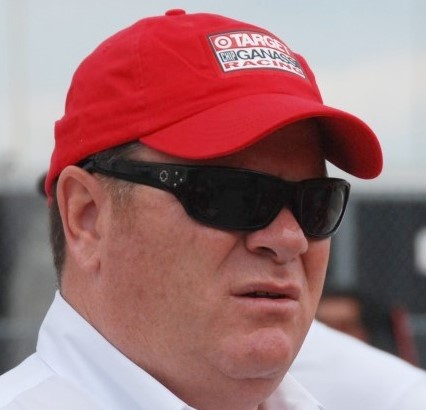Ganassi issues a warning
 |
| Hey Chip, why not let Mike Hull run the team for you, and you can be IRL CEO? |
Chip Ganassi’s passion for auto racing started early.
When he was 5 years old, Ganassi’s father went to Indianapolis to take part in an equipment auction and took in the 1963 Indy 500 while he was there. The elder Ganassi came home with an 8 millimeter film of the race.
“I watched it on the living room wall almost every night,’’ Chip Ganassi said. “If there’s anything you want to know about the `63 race, I’ve watched it about 6,000 times.’’
That grainy film was the catalyst for Ganassi’s career in racing that eventually took him to Indianapolis as the fastest rookie qualifier in 1982. He drove in the big event five times with a best finish of eighth in 1983. His racing career was effectively cut short by a head injury in an Indycar crash at Michigan in 1984. But Ganassi wasn’t ready to give up his love affair with the sport.
He bought into Pat Patrick’s CART team in 1988, took control and renamed the team Chip Ganassi Racing at the end of the 1989 season and has become one of the most successful team owners in American racing over the ensuing years.
Among the accomplishments that his team’s have enjoyed are three Indy 500 wins, four consecutive CART championships, three IndyCar Series championships and two championships in the Rolex Grand-Am Sports Car Series.
In 2010, he will field two cars in the IZOD IndyCar Series, two cars in NASCAR’s Sprint Cup series and two cars in Grand-Am, beginning with this weekend’s Rolex 24-Hour race, which he won three straight times, from 2006-2008.
“I’ve always been fascinated by the artistry of racing,’’ Ganassi said during a speech earlier this month at the American Auto Racing Writers and Broadcasters awards dinner in Indianapolis. “Drivers take it to outside the edge of performance.’’
But Ganassi, honored as a Pioneer in Racing by the AARWBA, is a businessman first and a racing fan second. He can clearly see that the sport must make some changes in these difficult economic times, not only to prosper but to survive.
He said technological innovation is a must if sponsors, manufacturers and fans are to remain involved and interested in all forms of auto racing.
“We in the racing industry need to be bold in meeting and demonstrating tomorrow’s technology and innovations, showcasing what can be achieved as we embark on a new era of efficiency," Ganassi said. “In order to keep the sport of auto racing healthy, it’s going to take our collective efforts.
“We need to stay relevant in the sports landscape. We need to stay relevant to sponsors and to Detroit so that racing stays a platform for them. Racing needs to take the leadership role by being on the leading edge of technology. Innovation must once again become the core of motor sports.’’
To illustrate what he was referring to, Ganassi noted that Target Chip Ganassi Racing IndyCar Series engineer Ben Bowlby is heading up the design and development of a radically new Indy car design known at this point as the Delta Wing car.
The new car will not be exclusive to the Ganassi organization, but Ganassi said the official announcement of the new car will take place sometime next month, probably at the Chicago Auto Show.
“It’s a big step forward in meeting the modern-day challenge of achieving the same performance with far greater efficiency,’’ Ganassi said. “And, if we’re going to survive in this industry, that’s what we need to have, greater efficiency with the same performance and the same speed. And that same feeling when you’re sitting and watching in Turn One at Indianapolis."
But Ganassi said the Delta Wing design is only one small step in keeping the sport heading in the right direction.
“We need to keep moving forward on new technology in all areas of the sport,’’ he said. “And, even in this economy, innovation is what does that.’’ Racin Today
